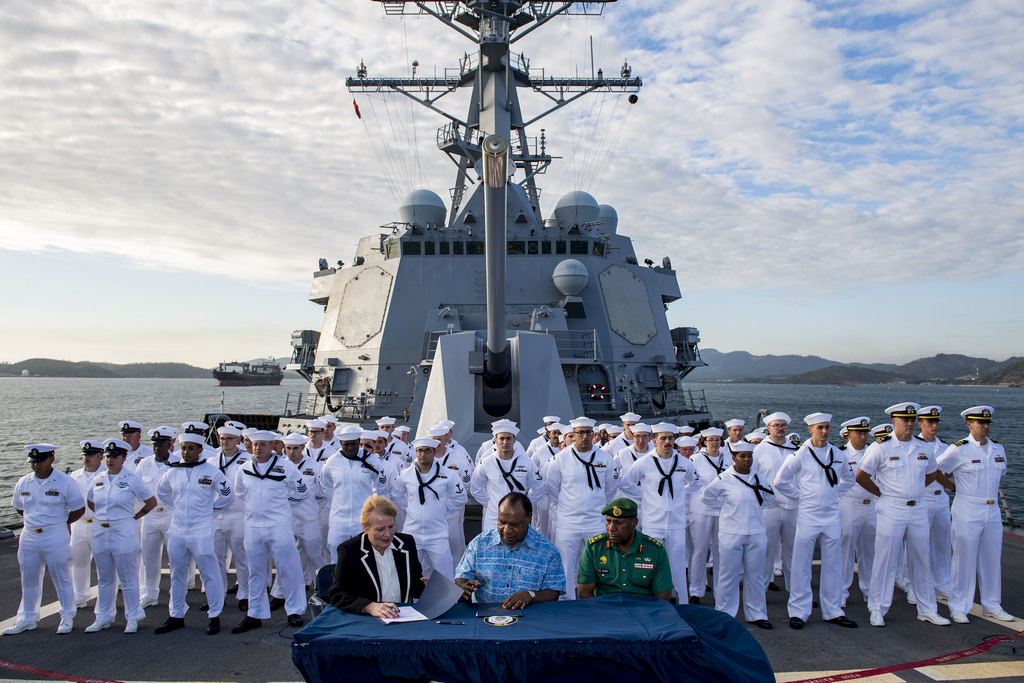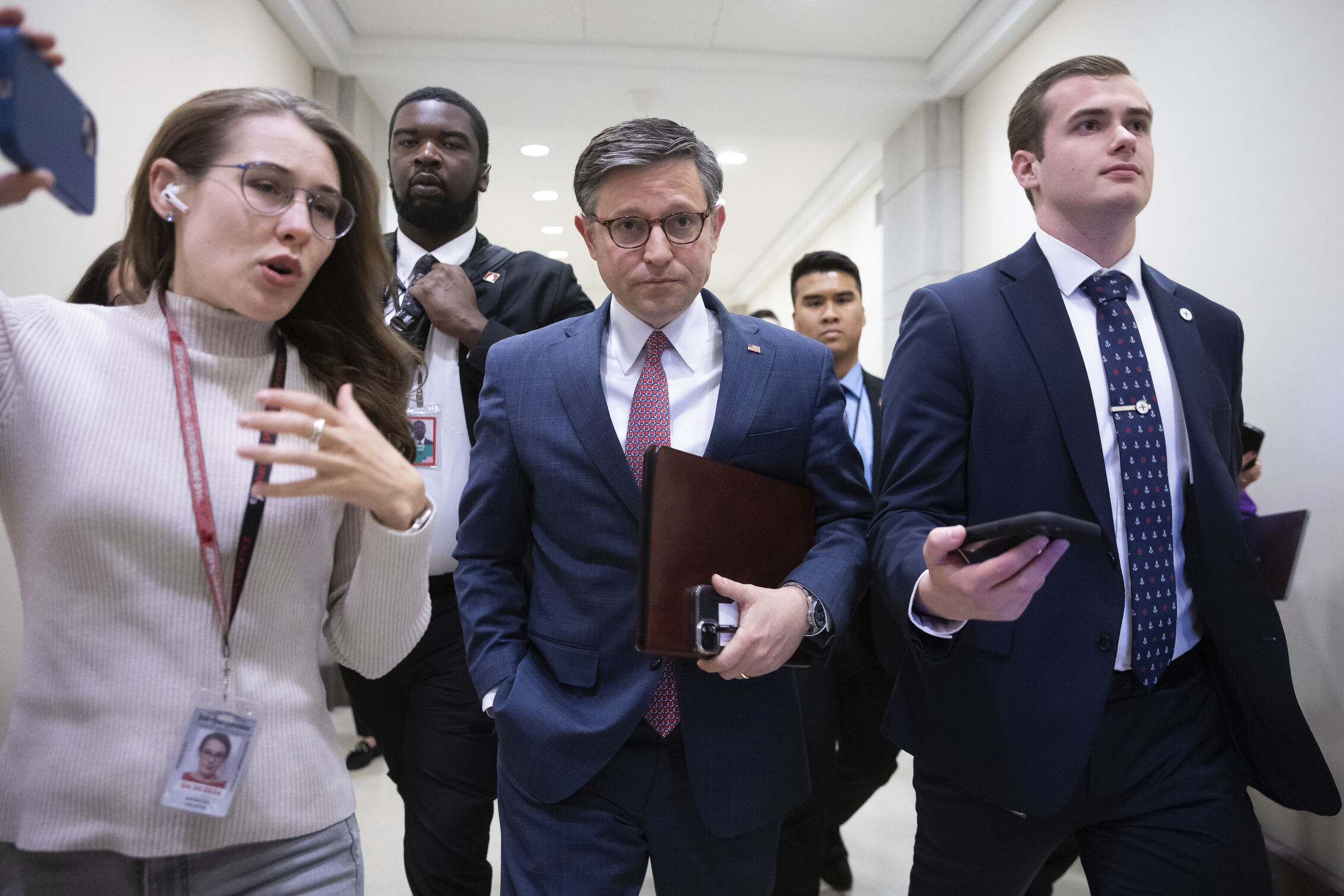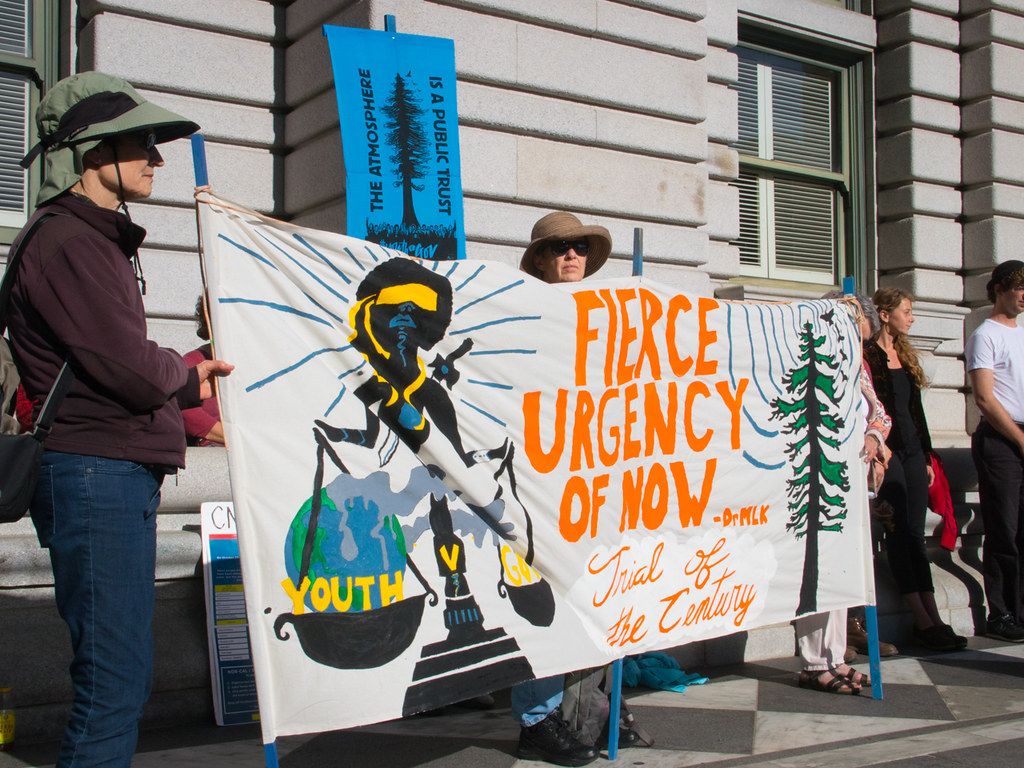Water Wars: Agreements and Disagreements
The annual Asia-Pacific Economic (APEC) Summit concluded on Nov. 18 in Papua New Guinea with leaders failing to agree on a final communique for the first time ever, due to clashes between the United States and China. APEC is an intergovernmental forum of 21 Pacific Rim states, including Canada, Australia, Japan, Indonesia, Singapore, Russia, Peru, Vietnam and others.

Published by The Lawfare Institute
in Cooperation With

The annual Asia-Pacific Economic (APEC) Summit concluded on Nov. 18 in Papua New Guinea with leaders failing to agree on a final communique for the first time ever, due to clashes between the United States and China. APEC is an intergovernmental forum of 21 Pacific Rim states, including Canada, Australia, Japan, Indonesia, Singapore, Russia, Peru, Vietnam and others.
China and the United States reportedly could not agree over a sentence in the proposed draft communique: “We agreed to fight protectionism including all unfair trade practices.” According to the Wall Street Journal, China refused to sign onto the proposed language, feeling it was a targeted rebuke, and the United States refused to remove it.
The Wall Street Journal also reports that the other members of APEC supported the proposed language.
Chinese and American officials exchanged pointed words in speeches and meeting over the course of the conference. U.S. Vice President Mike Pence said that “China has taken advantage of the United States for many, many years.”
In turn, the Chinese Foreign Ministry called on the U.S. to “match its deeds with its words and truly treat all countries, big or small, as equals.”
Another major story to come out of APEC concerns cooperation between the United States, Australia and Papua New Guinea. Vice President Pence announced on Nov. 17, during the conference, that the United States will partner with Australia and Papua New Guinea to operate the Lombrum Naval Base on Manus Island, New Guinea. Australia had previously announced plans in September to establish a naval presence on the island.
Manus, the largest of Papua New Guinea’s Admiralty Islands, is located off the northwest coast of the New Guinea, providing strategic access to both the Pacific and the east coast of Asia. Papua New Guinea currently operates the Lombrum Naval Base, which was originally built by the United States during World War II.
Australia is currently using Manus Island—quite controversially—to house refugees and asylum seekers, and it would require significant upgrades to house Australian and American naval vessels. However, there are also likely to be significant benefits for Papua New Guinea, which has a security agreement with Australia, and could potentially gain resources and training opportunities for its own fleet.
The United States’ and Australia’s decision to open these Naval Bases takes place in the larger context of the two countries’ shared pushback against Chinese influence in the region. In announcing the base, Pence stated, “We will work with these two nations to protect sovereignty and maritime rights in the Pacific islands,” a clear reference to China.
Pence also said in his speech that the United States would stand with countries in the region “who are anxious to partner with us for security,” and warned against the dangers of accepting Chinese loans for infrastructure projects. Australia itself, in cooperation with Japan, recently unveiled a $2 billion infrastructure financing project for other nations in the Pacific, partially for the purpose of countering Chinese influence.
In Other News
The United States
The U.S. Secretaries of Defense and State met with their Chinese counterparts on Nov. 9 to discuss relations between the two countries ahead of the G-20 summit in Argentina at the end of this month, at which U.S. President Donald Trump will meet Chinese President Xi Jinping.
Following the closed-door meeting, Secretary of Defense James Mattis and Secretary of State Mike Pompeo conducted a joint press conference with the head of the Chinese Communist Party’s foreign affairs committee, Yang Jiechi, and Defense Minister Wei Fenghe.
At the press conference, the representatives of the two countries emphasized potential areas of cooperation including reducing oil imports from Iran, and a new communication network for de-conflicting military issues and crisis response.
However, the two countries also revealed significant disagreements. Pompeo noted that he had pressed China on its actions in the South China Sea, with Yang saying that the Chinese build-up in the South China Sea was necessary to protect civilians and respond to “threats from the outside.” The two countries additionally disagreed significantly over the status of Taiwan.
The American side also raised concerns over China’s treatment of its Muslim minority, which China has been rounding up into internment camps for “reeducation,” and reportedly forcing to denounce their faith and pledge loyalty to the Chinese government. Yang defended the Chinese government’s policies, warning the U.S. from interfering with internal affairs, and saying that China had “taken steps to crack down on ethnic and separatist activities and violent terrorist crimes.”
China
On Oct. 26, while Japanese Prime Minister Shinzo Abe’s was visiting China, the two countries signed a set of historic trade and cooperation agreements, totaling over $2.6bn. These agreements also include simplified customs procedures, a currency swap agreement, cooperation on search & rescue missions, and the resumption of fleet visits between the two countries. Many of these projects will take the form of joint ventures, essentially giving Japan a hand in China’s Belt & Road Initiative.
Chinese Premier Li Keqiang explained the agreement by saying that “international conditions are unstable, and uncertainties have increased,” but that the cooperation would “benefit the development of global free trade.”
The relationship between China and Japan has been warming recently after a long period of tension due to territorial and maritime disputes, including over the Senkaku Islands in the East China Sea. However, with the escalation of the trade war between the United States and China, both countries appear to see the opportunity for economic growth through greater cooperation.
The overall relationship remains complex, however. Japan continues to conduct military operations with the potential to antagonize China, and announced at APEC that it would be working with Australia to finance infrastructure projects throughout the Pacific, a potential rival to China’s Belt & Road Initiative.
Analysis and Commentary
At the East Asia Forum, Shiro Armstrong analyzes the agreement between China and Japan through the lens of its effect on future infrastructure investing in the region. Armstrong says that this agreement signals a change in strategy for both China and Japan, representing a greater willingness on the part of both countries to engage in joint ventures, which could make future infrastructure projects more likely to succeed.
At the Center for International Maritime Security, Dr. Toshi Yoshihara of the Center for Strategic and Budgetary Assessments discusses China’s current naval capabilities and the growth in its commitment to building a Navy capable of challenging the United States. Dr. Yoshihara warns against the dangers of both over- and under-estimating China, and says that the United States must be willing to work with allies and be more open to taking risks in order to manage China’s rise.
And at The Diplomat, Jay Tristan Tarriela looks at the role of Coast Guards in East Asia, which many countries in the region have been focusing on developing. Tarriela argues that other analysts’ focus on the security implications of these Coast Guards masks much of the good these Coast Guards can do, including responding to emergencies and environmental disasters, and enabling greater cooperation between countries.





